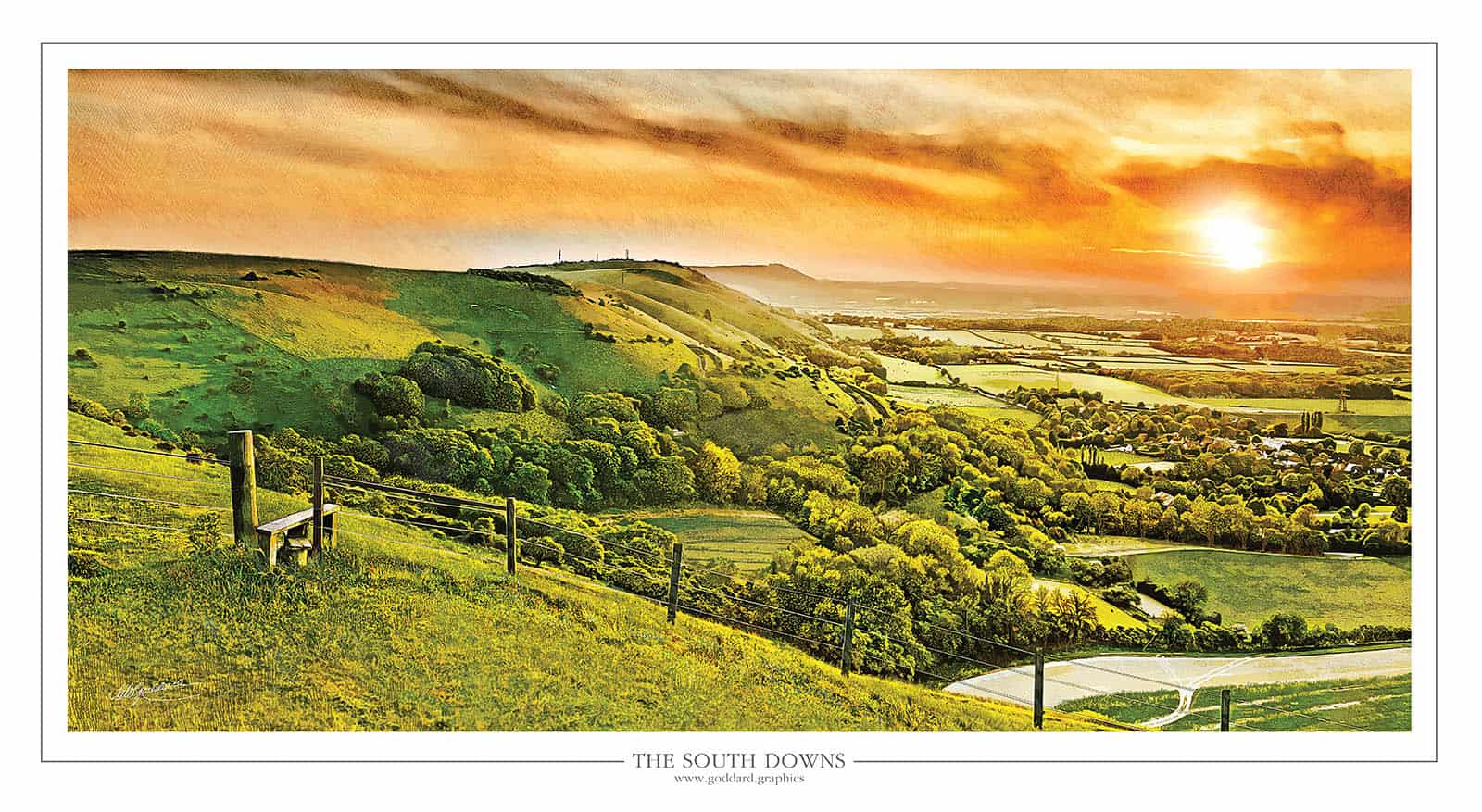The South Downs
(Click on the images for a large view)
Stop anywhere in the South Downs and it’s hard not to find an inspiring view.
Breathtaking, mysterious, beautiful and inspiring – the South Downs is all these things.
The grassy-topped wave of hills which give the park its name are truly magnificent and with over 3,300km of footpaths, bridleways and byways, there are more routes here than any other National Park. The famous South Downs Way is one of Britain’s National Trails, it runs for around 100 miles from Winchester in Hampshire to Eastbourne in Sussex.
The South Downs are formed from a thick band of chalk which was deposited during the Cretaceous Period between 100 and 66 million years ago within a shallow sea which extended across much of northwest Europe. The rock is composed of the microscopic skeletons of plankton which lived in the sea, hence its colour. The chalk has many fossils, and bands of flint occur throughout the formation.
The term ‘downs’ is from Old English dūn, meaning ‘hill’. The word acquired the sense of ‘elevated rolling grassland’ around the fourteenth century. These hills are prefixed ‘south’ to distinguish them from another chalk escarpment, the North Downs, which runs roughly parallel to them about 30 miles (48 km) away on the northern edge of the Weald.
Take a look at the same view, but this time in winter, here.




